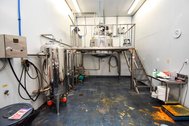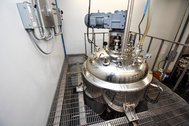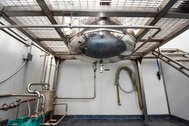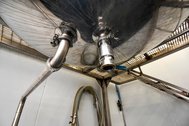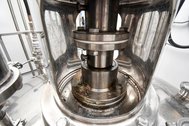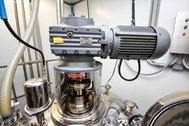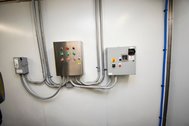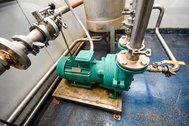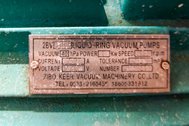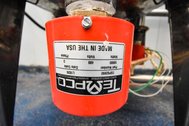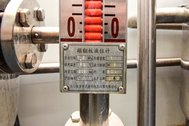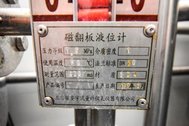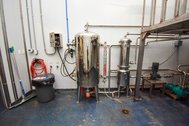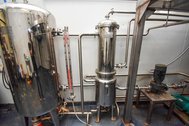


































Details
***SOLD*** 1 Used Bio Reactor with Gelatin Melter
No Mezzanine
Vacuum pressure in the vessel: 0.02-0.09 Mpa.
Working pressure in the vessel: 0.03-0.05 Mpa.
Examining Pressure in the vessel: 0.3-0.4 Mpa.
Working pressure in the jacket: 0.03-0.098 Mpa
Working temperature in tank: 50-100 ℃
Conveyor granule: 30 CP
Sealing parts and ring can be used for more than 3,000 continuous hours
The insulating layer uses super-fine glass cotton.
Inner vessel and insulation layer (covered layer) of the Tank, those sections exposed to raw materials are made of 1Cr18Ni9Ti stainless steel.
The jacket of the GDU uses high-quality steel.
The GDU and all stainless steel parts are well-polished.
General Information:
After ingredients are combined, the mixture is placed into a reactor called a Gelatin melter. The reactor surrounded by a thermal jacket heats the mixture while a very high torque turbine mixer stirs it under vacuum. At this stage, approximately 20% of gelatin mixture consists of water.
Bioreactor design is a relatively complex engineering task, which is studied in the discipline of biochemical/bioprocess engineering. Under optimum conditions, the microorganisms or cells are able to perform their desired function with a limited production of impurities. The environmental conditions inside the bioreactor, such as temperature, nutrient concentrations, pH, and dissolved gases (especially oxygen for aerobic fermentation) affect the growth and productivity of the organisms. The temperature of the fermentation medium is maintained by a cooling jacket, coils, or both. Particularly exothermic fermentations may require the use of external heat exchangers. Nutrients may be continuously added to the fermenter, as in a fed-batch system, or maybe charged into the reactor at the beginning of fermentation.
RSQ II Coil Pipe Type Water Heater
Model: RSQ-II
Volume: 300 L
Temp. Control Range: 0-100 Degrees C
Mfg. Date: 2016-03
Product Code: 160308
Hot water volume: 2,000 kgs/h
Power consumption: 18 Kw; 380V; 3 phase
Working temperature: 85-100 ℃
Weight: 350 Kgs
Dimension: External Φ. 700 x H 2,100 mm
Remark: To save energy, the heater can be modified as a steam heating type.
General Info:
The tank is one of the essential auxiliary equipment for water-bath gelatin dissolving unit during the gelatindissolving process. As a essential heating mode during softgel encapsulation process, water-bath helps tokeep the viscosity of the gelatin liquid; yet the viscosity of gelatin liquid could only be stable under constanttemp. at 90-100℃. The tank meets the above requirement by a series of special design: serpentine heating,design ensure recycled use of hot water; outer tank layer is covered by super-fine glass cotton insulationlayer; and the outer cover is sealed with high quality stainless steel. The tank features convenient cleaningand good insulation function and is professional energy-saving heat exchange equipment.
LNG-II Vacuum Condensation Tank
Type: LNG-II
Condensation Area (m2): 60
Vacuum (Mpa): =/< 0.09
Size and Shape (mm): 400x1750
Product Number: 160110
Ex Factory Date: 2016-1-18
Location: Quitman, Texas

